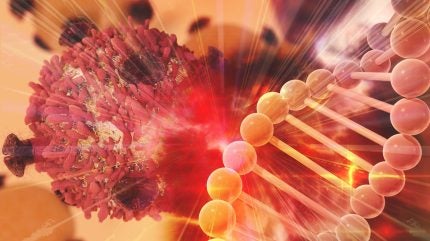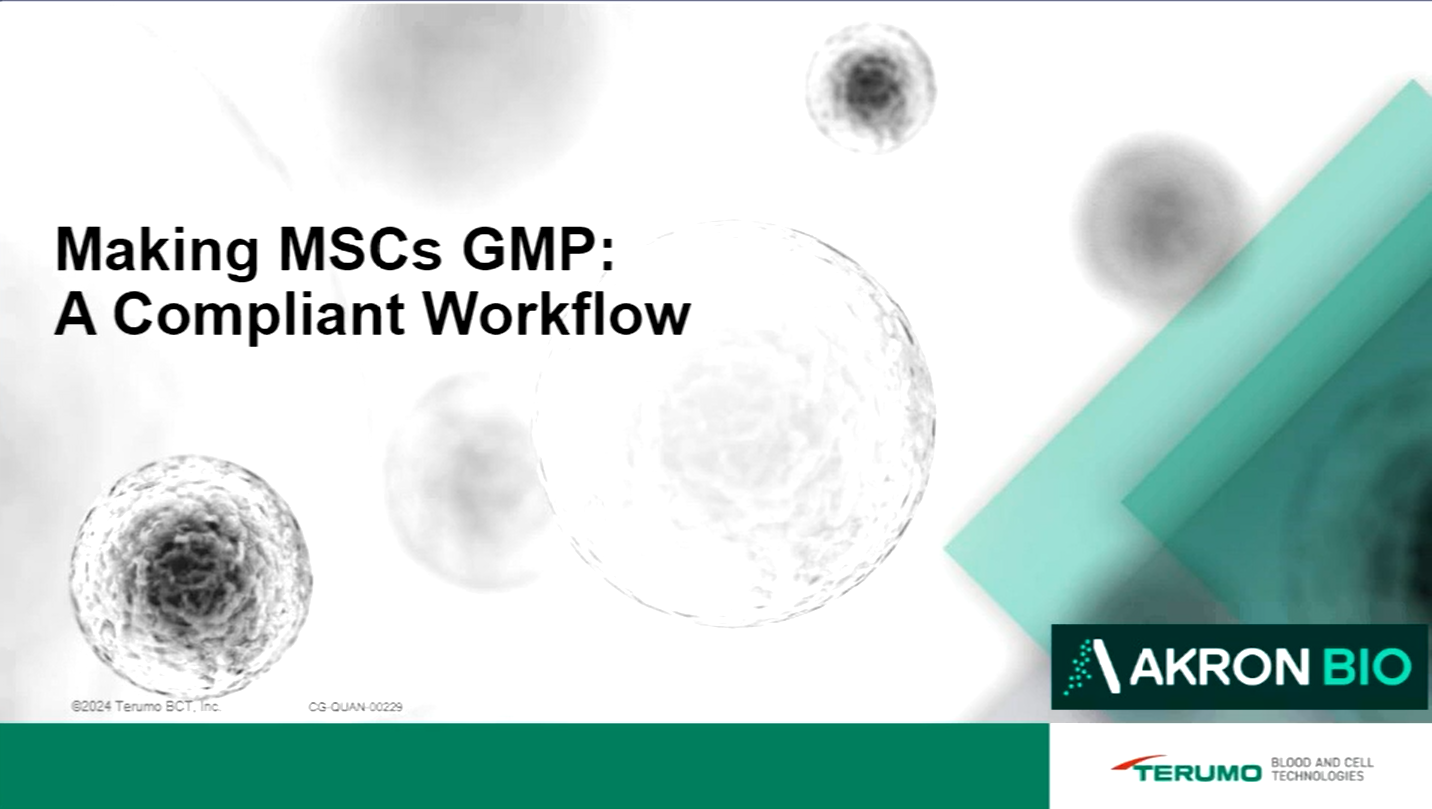
Cell and gene therapies (C>s) work by either introducing healthy cells into a patient’s body (cell therapy) or by modifying a patient’s existing cells at the genetic level (gene therapy) to correct a disease-causing malfunction. These therapies can significantly boost the body’s immune system to fight a growing range of serious diseases, from cancer to diabetes and sickle cell anemia.
Starting material is a critical component in the development and commercialization of these therapies. To be successful in patients, it is essential to ensure a consistent supply of quality starting material that is maintained throughout the treatment life cycle.
Historically, the starting material has been less of a focus than downstream manufacturing and process testing. While these latter aspects are fundamental in cell and gene therapy, the quality of the starting material is a major contributing factor to the success of a treatment. A low-quality raw material will likely provide a low-quality treatment to a patient. It will also take more raw material to reach the quantities required for an effective dose.
“The importance of securing quality and consistent raw material cannot be ignored because the successful manufacturing of a drug product is only possible by using a robust cellular material that is amenable to genetic manipulation and expansion,” explains Dr. Parijat Jain, Vice President and General Manager of U.S.-based BioIVT’s cell and gene therapy business.
The first step for cell and gene therapy manufacturing
White blood cells are integral to many cell and gene therapies, taking the body’s natural immune system and enhancing it to fight diseases far more effectively.
The first step for any cell and gene therapy begins with the starting material. This requires extracting white blood cells from the patient or donor by the process known as leukapheresis. The white cell blood product gained from the apheresis extraction process is called a leukopak.
Leukapheresis starts as whole blood enters the apheresis device, where it is separated into layers in based on cell size. White blood cells are separated from red blood cells and platelet. Both the red blood cells and the platelets are then returned to the donor.
More than 10 billion white blood cells are typically extracted during each collection. Within the leukopak, the exact cell composition can vary from donor to donor. T cells typically make up almost half of the leukopak material. Around 20% of the material is monocytes, with the rarer and more valuable natural killer (NK) cells accounting for approximately 14%.1
At present, the majority of cell and gene therapy treatments are autologous, which involves taking white blood cells from the patient, then modifying, processing, and administering those cells to the patient. According to Dr. Jain, the variability in patient-derived cells presents the biggest challenge, and the need for having GMP solutions for late-phase development as well as commercialization is paramount.
Ensuring consistency in cell collections
Consistency across different collection sites is crucial. For sickle cell disease, apheresis is an established treatment. Apheresis involves removing unhealthy red blood cells from the patient that are later replaced with healthy red blood cells.
Alongside improved operator training to develop expertise in apheresis procedures, there is a need to prevent clumping in extracted material — which can reduce cell yield and quality.
“If there’s clumping, then it hugely impacts collection efficiency. And operators don’t know how to identify it,” explains Doreen Condon, gene therapy apheresis expert from Bluebird Bio. “That has a major impact on the outcome of our manufacturing processes,” she says.
“If there’s huge cellular loss during the manufacturing process, it means the patient has to return [to extract more cells],” Condon adds. “It can influence the quality of the apheresis coming into manufacturing.
“We would much rather only manufacture once than have the patient return and manufacture [the gene therapy product] again. All of that is beneficial for everybody, for Bluebird, the patient, and the hospital,” says Condon. “Otherwise, the hospital ends up paying for the patient to come back and go through another whole cycle again of mobilization, apheresis, collections.”
Development of cell and gene therapies for sickle cell disease could mean the number of treatments is dramatically reduced, with promising treatments starting to receive regulatory approval in certain countries.2
Delivering cell and gene therapy at scale
Across cell and gene therapy, there is an urgent need to deliver sufficient doses of therapies at scale, which increases throughout clinical trials and rises further upon commercialization.
Any delays with material can be costly, extending clinical timelines and even preventing the product from entering the market. Furthermore, the stability of materials is critical throughout the product life cycle to ensure that treatments arrive to patients in the optimum condition.
As the cell and gene therapy industry develops, many predict that there will be a greater need for donors to ensure that there are sufficient cell volumes to treat certain patients — particularly in the rare disease space.
Donors must be carefully screened to determine suitability. Once identified, donors should be carefully managed and advised on dietary and lifestyle considerations to ensure that their cells retain sufficient quality.
“You’re dealing with living entities,” adds Dr Jain. “Unlike in small molecules, where one is dealing with stable chemicals, the C>s deal with living entities, which presents multi-fold challenges.”
BioIVT ensures high-quality fresh or cryopreserved leukopaks out of its broad network of collection centers in the U.S., EU, and U.K., and ensures access to the leukopaks for over 300 hospitals and medical facilities globally.
Allogeneic approaches enable more controlled sourcing from selected donors and could one day provide off-the-shelf treatments that eliminate the need to extract cells from the patient.
“With the shift in focus from rare diseases to more common diseases, solid tumors, as well as autoimmune diseases, the market is set to see a spike in starting material demand in the near future,” says Dr. Jain. “Therefore, it is really important that the supplier has that recallable donor pool, as well.
“Unlike any other treatments in the field of medicine, these therapies are curative instead of being palliative, meaning one is not simply treating the symptoms but actually curing the disease,” he adds.
References:
1. Charles River Laboratories. Human Peripheral Blood Products. 24 February 2025. Accessed 28 February 2025. https://www.criver.com/products-services/cell-sourcing/human-peripheral-blood?region=3601.
2. Mundasad S. NHS to offer ‘groundbreaking’ sickle cell gene therapy. BBC.com. 30 January 2025. Accessed Feb.28 2025. https://www.bbc.co.uk/news/articles/cx2yg9yny0ko.
BioIVT is either a registered trademark or trademark of BioIVT Holdings, LLC in the United States and/or other countries. Bluebird Bio is either a registered trademark or trademark of Bluebird Bio, Inc. in the United States and/or other countries.



